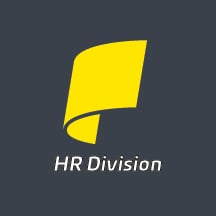As we head into the final stretch of 2023, there are a number of important tasks related to payroll, benefits, compliance, and general HR to take care of by the end of the year. Here’s your HR checklist for Q4.
PAYROLL & TAX
File Form 941. File IRS Form 941, Employer’s Quarterly Federal Tax Return, if you paid wages subject to employment taxes. If you deposited all taxes due on time, you have ten additional calendar days to file. IRS Form 941 is due Oct. 31, 2023, for Q3 2023, and Jan. 31, 2024, for Q4.
 Schedule Special Bonus Payrolls. Schedule special bonus payrolls and verify that taxable fringe benefits were withheld from paychecks during the year.
Schedule Special Bonus Payrolls. Schedule special bonus payrolls and verify that taxable fringe benefits were withheld from paychecks during the year.
Monitor Proposed Minimum Wage Increase. Watch for updates on the proposed exempt minimum wage increase and submit public comments through the federal register by Nov. 7, 2023.
COMPLIANCE
Provide QSEHRA Plan Notice. Applicable small businesses, generally those with less than 50 employees that do not offer a group health plan, can contribute to their employees’ health care costs through a Qualified Small Employer Health Reimbursement Arrangement (QSEHRA). A QSEHRA allows small employers to provide non-taxed reimbursement of certain health care expenses, like health insurance premiums and coinsurance. For QSEHRA plans that begin Jan. 1, 2024, employers must notify employees by Oct. 3, 2023.
Distribute FSA Covered Expenses Reminder. If you offer a Flexible Spending Account (FSA) as part of your benefits program, remind employees to submit receipts and supporting documentation for incurred covered expenses. The deadline to submit 2023 receipts for reimbursement is Dec. 31, 2023. Be aware that some plans may differ, so review your plan’s submission deadlines and other requirements.
Implement New Form I-9. On Nov. 1, 2023, employers are required to use the new Form I-9 to verify employment authorization. To examine I-9's remotely, visit the USCIS website for more information about requirements and responsibilities.
 Review New Requirements of Pregnant Workers Fairness Act (PWFA). Under PWFA, covered employers must provide reasonable accommodations to workers with known limitations related to pregnancy, childbirth, or related medical conditions unless the accommodation causes the employer undue hardship. The new law also covers childbirth and related medical conditions, including abortion, birth control, menstruation, lactation, fertility treatments, and miscarriage.
Review New Requirements of Pregnant Workers Fairness Act (PWFA). Under PWFA, covered employers must provide reasonable accommodations to workers with known limitations related to pregnancy, childbirth, or related medical conditions unless the accommodation causes the employer undue hardship. The new law also covers childbirth and related medical conditions, including abortion, birth control, menstruation, lactation, fertility treatments, and miscarriage.
PWFA applies only to accommodations and does not replace federal, state, or local laws covering workers affected by pregnancy, childbirth, or related medical conditions, including:
- Title VII and the ADA, both enforced by the EEOC
- Family and Medical Leave Act of 1993 and PUMP Act (Providing Urgent Maternal Protections for Nursing Mothers Act), both enforced by the Department of Labor
Conduct Non-discrimination Testing. Non-discrimination testing is a set of IRS tests that reviews the fairness of an employer’s benefit plan. Employers who offer a 401K, 125 Premium Only Plan (POP), and flexible spending account (FSA) must conduct non-discrimination testing on the last day of their plan year to ensure that benefits are available to all eligible employees under the same terms. By conducting early tests, you can modify plans accordingly. The deadline for calendar year plans is Dec. 31, 2023.
 Review New OSHA Rule on Injury Data. OSHA’s new rule requires applicable employers in designated high-hazard industries to electronically submit information from their Form 300, Log of Work-Related Injuries and Illnesses, and Form 301, Injury and Illness Incident Report, to OSHA once a year. These submissions are in addition to Form 300A, Summary of Work-Related Injuries and Illnesses. The new rule, which takes effect on Jan. 1, 2024, applies to employers with 100 or more employees in designated industries.
Review New OSHA Rule on Injury Data. OSHA’s new rule requires applicable employers in designated high-hazard industries to electronically submit information from their Form 300, Log of Work-Related Injuries and Illnesses, and Form 301, Injury and Illness Incident Report, to OSHA once a year. These submissions are in addition to Form 300A, Summary of Work-Related Injuries and Illnesses. The new rule, which takes effect on Jan. 1, 2024, applies to employers with 100 or more employees in designated industries.
Prepare and File 2022 EEO-1 Report. The 2022 EEO-1 Component 1 data collection report opens Oct. 31, and applicable employers must file by Dec. 5.
Prepare for New Federal, State, and Local Employment Laws. New employment laws and changes often go into effect on Jan. 1, 2024. Review applicable laws in the states you operate in and/or have employees working and prepare to be compliant by Jan. 1, 2024. For example, this may include state minimum wage increases and new leave laws.
BENEFITS
Review 2024 ACA Affordability Thresholds. Review your employee health plan to ensure it satisfies the Affordable Care Act (ACA) affordability threshold requirements. The affordability threshold is the highest percentage of household income an employee must pay for monthly health insurance plan premiums, based on the least expensive employer-sponsored plan offered that meets the minimum essential coverage requirements required under the ACA.
 The IRS lowered the 2024 affordability threshold requirements, or cost-sharing limit, to 8.39% of an employee’s household income. This percentage is down from the limit of 9.12% set in 2023. The adjusted threshold percentage applies only to a plan year — not a calendar year. Non-calendar-year plans must use 9.12% to determine affordability in 2024 until their new plan year starts.
The IRS lowered the 2024 affordability threshold requirements, or cost-sharing limit, to 8.39% of an employee’s household income. This percentage is down from the limit of 9.12% set in 2023. The adjusted threshold percentage applies only to a plan year — not a calendar year. Non-calendar-year plans must use 9.12% to determine affordability in 2024 until their new plan year starts.
Distribute Annual Medicare Part D Notice. If you provide prescription drug coverage, you must distribute a creditable coverage notice, Medicare Part D Notice of Creditable Coverage, to plan participants by Oct. 14, 2023. Employers offering prescription drug coverage are also required to annually disclose to CMS the plan's creditable status within 60 days of the start of the plan year.
Distribute Annual Compliance Notices. Each year, applicable employers are required to distribute certain compliance notices to employees. Examples include a Summary of Benefits and Coverage (SBC), privacy practices on personal health information (HIPPA), the Children's Health Insurance Program Reauthorization Act on health coverage assistance (CHIPRA), and Women’s Health and Cancer Rights Act (WHCRA).
Also, make sure that your wellness program follows the compliance requirements under the Equal Employment Opportunity Commission (EEOC), Americans with Disabilities Act (ADA), and Genetic Information Non-discrimination Act (GINA).
GENERAL HR
Update Employee Records. Ensure all employee information is updated and that outdated records are disposed of properly.
 Update and Distribute Annual Internal Documents. Fourth quarter is a great time to review annual documents that must be distributed to employees, such as employee handbooks, workplace policies, and the calendar of company-observed holidays for the coming year.
Update and Distribute Annual Internal Documents. Fourth quarter is a great time to review annual documents that must be distributed to employees, such as employee handbooks, workplace policies, and the calendar of company-observed holidays for the coming year.
Update Illness and Attendance Guidelines. Given the typical increase in flu/RSV/COVID during 4th quarter, review and update your company’s illness and attendance protocols. communicate any changes to employees in order to prevent confusion and reduce the risk of a workplace outbreak. Check the CDC website for current guidance.
Need Help?
Depending on the type of business and industry, your checklist may be different and even more complex. If so, just give us a call at (800) 446-6567. By partnering with an IRS-certified PEO like Propel HR, you gain access to a team of HR experts to help you navigate the complexities of your business as well as help you stay compliant. To learn more, visit www.propelhr.com, and to download your HR Checklist for year-end 2023, visit www.mypropelpro.com/checklist.
PLEASE NOTE: This information is for general reference purposes only. Because laws, regulations, and filing deadlines are likely to change, please check with the appropriate organizations or government agencies for the latest information and consult your employment attorney and/or benefits advisor regarding your responsibilities. In addition, your company may be exempt from certain requirements and/or be subject to different requirements under the laws of your state. (Updated Sept. 27, 2023)
About Propel HR. Propel HR is an IRS-certified PEO that has been a leading provider of human resources and payroll solutions for more than 25 years. Propel partners with small to midsized businesses to manage payroll, employee benefits, compliance and risks, and other HR functions in a way that maximizes efficiency and reduces costs. Visit our new website at www.propelhr.com.











